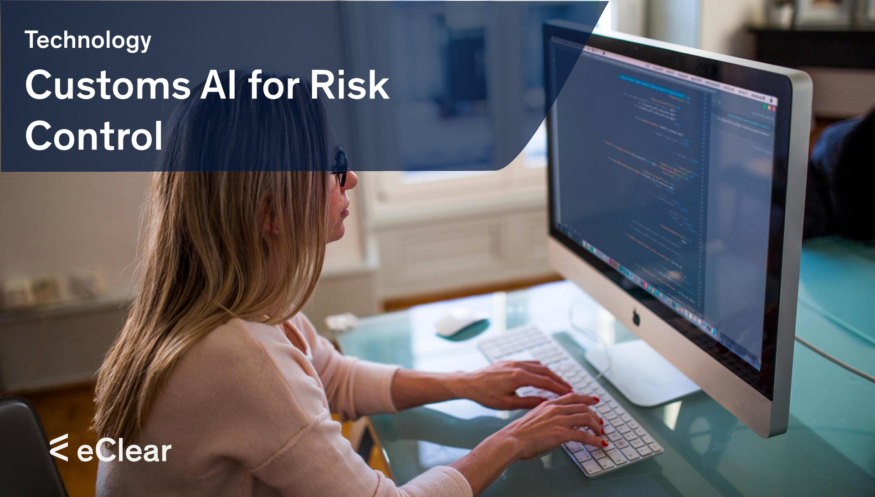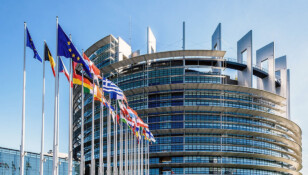Navigating the complexities of EU customs regulations can strain even the most experienced teams. Strict compliance requirements, intricate tariff classifications, and the sheer volume of cross-border trade create a high-risk environment for errors and delays. AI-powered solutions are revolutionising customs operations, offering the potential to streamline processes, mitigate risk, and enhance visibility across the supply chain. These tools leverage machine learning algorithms to analyse vast datasets, identify potential anomalies, and automate routine tasks—freeing up customs professionals to focus on strategic decision-making.
Current State of Customs Procedures
Traditional customs procedures rely heavily on manual document review and data entry, which is time-consuming and prone to human error. Customs officials must analyse complex trade documents, interpret intricate tariff codes, and cross-reference regulatory databases while managing a high volume of shipments and mitigating security risks. Further, constant updates to EU customs regulations and data handling protocols [cite a specific directive or regulation here] add additional layers of complexity. These demanding tasks require both vigilance and deep technical knowledge.
AI Technologies in EU Customs Procedures
AI is setting a new standard in the complex arena of EU customs, fundamentally altering the traditional approach. Here’s a closer look at its transformative impact:
- Automated Document Analysis: AI-powered Optical Character Recognition (OCR) and Natural Language Processing (NLP) analyse trade documents with unparalleled speed and accuracy, minimising errors and expediting clearance.
- Precision Cargo Targeting: AI-powered image analysis augments X-ray scanning, pinpointing high-risk areas and reducing intrusive physical inspections.
- Predictive Analytics: By analysing historical trade data and external factors, AI models predict potential violations and optimise resource allocation, enabling proactive risk management.
- Enhanced CRMF: AI integration streamlines the EU’s Customs Risk Management Framework, enabling intelligent shipment classification and real-time adjustments to risk profiles, strengthening security and efficiency across borders.
Impact of AI on Efficiency and Security
Artificial intelligence is poised to transform EU customs operations through significant gains in efficiency and security. Let’s delve into the specifics:
- Efficiency Gains: AI can drastically reduce processing times by automating repetitive tasks like document review and risk scoring. Predictive analytics optimise workflows, streamlining processes and minimising potential bottlenecks.
- Enhanced Security: AI-powered anomaly detection flags suspicious shipments and patterns, aiding in identifying fraud, contraband, and compliance violations. This enables targeted inspections, minimising disruptions to legitimate trade.
Limitations and Challenges: It’s important to acknowledge that AI models require large amounts of high-quality data for training and will necessitate ongoing maintenance. Furthermore, concerns around potential biases in AI decision-making must be addressed.
Real-World Example
Consider the EU’s Customs Risk Management Framework (CRMF) to appreciate AI’s impact on customs fully. AI is crucial in refining risk assessments within Priority Control Areas (PCAs) and the Customs Risk Management System (CRMS2). These systems leverage machine learning algorithms to analyse trade data, identifying high-risk shipments for targeted inspections. This AI-powered approach optimises resource allocation and enhances security.
Data Privacy and GDPR in AI Implementation
Integrating AI in customs operations demands a profound understanding of data privacy and security gravity. Here’s a comprehensive overview of the critical factors:
- GDPR Compliance: It’s not just a matter of following the rules. It’s a matter of prioritising data protection. Consider implementing Privacy by design principles, which means integrating data protection into your system architecture. This is a crucial aspect of customs operations.
- Data Security: It’s not just a nice-to-have. It’s a must. Robust encryption, pseudonymisation techniques, and strict access controls are essential for AI implementation in customs operations.
- Transparency and Explainability: AI models need to do more than make decisions; they must also explain them. This is of utmost importance for customs operations.
International Collaboration and Initiatives
The essence of global trade lies in cross-border collaboration, and the adoption of AI in customs compliance and risk assessment is no exception. Here’s why a united approach is crucial:
- Shared Standards: AI systems rely on consistent data formats and protocols. International collaboration on standards (e.g., WCO Data Model) ensures seamless information exchange, reducing friction for businesses operating across borders.
- Best Practices and Knowledge Transfer: Countries can learn from each other’s AI successes and challenges. Platforms facilitated by the WCO and other organisations enable the exchange of valuable insights, accelerating progress globally.
- Collective Security: Threats don’t respect borders. Sharing risk profiles and threat intelligence through trusted networks elevates global trade security, e.g., the WCO’s Data Analytics Working Group.
Specific AI Tools and Algorithms
AI’s impact on customs stems from powerful tools and algorithms:
- Natural Language Processing (NLP): NLP models power tools that streamline document analysis, classifying goods based on tariff codes [mention a specific NLP-based tool popular in customs, if possible]. For example, they excel at entity extraction, enabling automated identification of critical information like product descriptions and origin country.
- Machine Learning (ML): ML algorithms drive predictive risk assessment systems. Customs administrations use these to analyse vast datasets, uncovering patterns of fraud or non-compliance. Specific techniques include classification algorithms, regression models, and clustering for anomaly detection.
- Computer Vision: Deep learning models like CNNs revolutionise cargo image analysis, detecting anomalies in X-ray scans that might signal contraband.
- Complementary Technologies: Rule-based systems remain essential for enforcing complex regulations, working with AI for enhanced decision-making. Additionally, unsupervised learning plays a growing role in proactively flagging unusual transactions for further investigation.
Cost-Benefit Analysis
A thorough cost-benefit analysis is crucial when considering AI adoption in customs. Here’s a breakdown of key factors:
Upfront Costs:
- Software: Developing or licensing specialised AI models for trade document analysis, risk assessment, or image recognition.
- Hardware: Potential upgrades for data storage and processing capabilities.
- Training: Upskilling customs personnel to use and interpret AI-generated insights effectively.
Potential Savings:
- Efficiency Gains: Reduced processing times, lower error rates, and optimised resource allocation translate to direct operational cost savings.
- Fraud and Compliance: Fewer penalties due to enhanced fraud detection and improved compliance adherence.
- Agility: Faster response times to emerging threats or regulatory changes, leading to a more resilient supply chain.
- ROI Calculation: While quantifying some benefits can be challenging, it’s reassuring to know that focusing on metrics with clear financial impact (e.g., reduction in manual document checks expedited clearance times) and using industry benchmarks can provide a solid foundation for your calculations.
Challenges and Ethical Considerations
While AI promises transformative potential, customs administrations must proactively address these key challenges and ethical implications:
- Technical Hurdles: Mitigating integration issues with legacy systems, ensuring data quality, and establishing robust maintenance practices are crucial for long-term success.
- Regulatory Compliance: Evolving data privacy laws (GDPR) and emerging AI-specific regulations demand continuous monitoring and adaptation.
- Ensuring Fairness and Transparency: AI models must be rigorously tested for potential biases, especially those trained on historical data that might reflect past injustices. Explainability mechanisms (e.g., LIME or SHAP) are essential for auditing AI decisions and building trust.
- Human-AI Collaboration: AI should augment, not replace, expert judgment. Customs professionals must be equipped to interpret and critically evaluate AI outputs.
Let’s stay in touch!
Stay up-to-date on the latest market trends, best practices and regulatory changes affecting cross-border selling by following us on LinkedIn.







